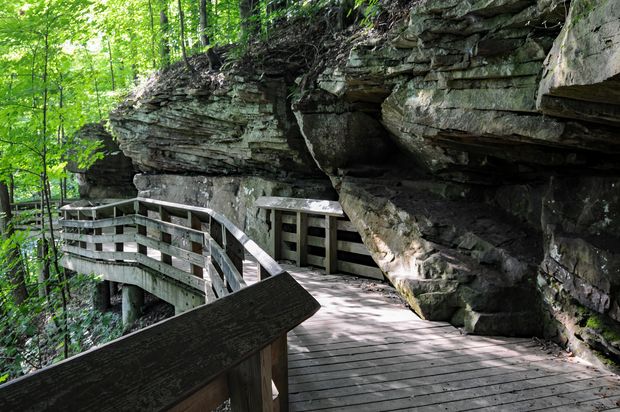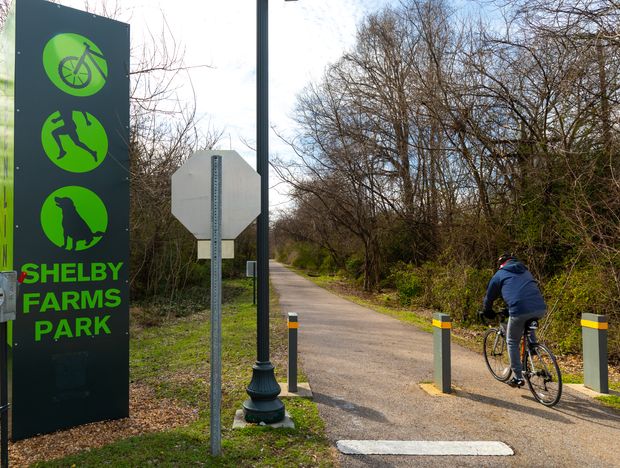Dear MarketWatch,
I would like to find a liberal-thinking area to retire on $3,000 a month, rent included. Hiking, biking and gardening are priorities.
Thanks,
Ken
Dear Ken,
You seem wide open to where in the country you could retire, which makes finding an affordable and interesting spot easier. My first thought is underappreciated Midwestern college towns. They tend to be that blue spot you’re looking for but far less expensive than those on the coasts. Obviously you will have colder winters than in the South.
As I have written many times, I’m a fan of college towns because they tend to punch above their size on amenities. So whatever part of the country you are thinking about, start your search there. A tip: The rental calendar in college towns may be tied to the academic year, given that students look in the spring and sign a lease for fall.
But they aren’t your only option.
The MarketWatch “where should I retire” tool can help you narrow down your list (aside from politics, which can vary across communities within a metro area). I asked for median rent below $850 to leave you with more of a cushion, a town with public transportation (in case you need it) and a below-average cost of living — and, if possible, a big university. Then I started researching and being a bit flexible. (I’ve ended up with colleges that aren’t the big research institutions that are used for the MarketWatch tool.) You may want to add more criteria.
You will be able to garden just about anywhere, though just what you can grow may be different from what you are used to. All three of my suggestions have master gardener programs that need volunteers.
You’ll find a bike club to ride with (and make new friends) just about anywhere as well; you may want to refine your shortlist by comparing it with the League of American Bicyclists’ bicycle-friendly communities. All three of my suggestions are bronze-level communities by that group’s metrics.
Before you commit to a place, please spend time there, pretending you have already relocated rather than just vacationing. Moves are expensive; a bad move is an expensive mistake. And, whatever you decide, leave yourself a financial cushion.
With all that said, here are some suggestions to get you started.
Oberlin, Ohio

The Brandywine Falls Trail in Cuyahoga Valley National Park.
iStockphoto
The MarketWatch retirement tool suggested the Cleveland metropolitan area. I’m picking Oberlin, a town of 8,300 in the southwest part of that area, 40 minutes from Cleveland, and home to a 3,000-student liberal-arts college and renowned music conservatory. There’s no shortage of free concerts by talented musicians while classes are in session.
The town is politically blue, though Lorain County as a whole is red. The town doesn’t have a bus system, but the college operates a Saturday afternoon shopping shuttle-bus service that anyone can use.
Lorian County’s portion of the North Coast Inland Trail, at just over 19 miles, goes through Oberlin. When completed, the biking and running trail will run more than 100 miles from Toledo to Lorain. You’d also be within 25 miles of picking up the almost-finished Ohio-to-Erie Trail, bookended in Cincinnati and Cleveland.
You also could spend a lot of time exploring Cuyahoga Valley National Park about 45 minutes away, including hiking its 125 miles of trails and paddling along the Cuyahoga River.
And when you want the amenities of a big city, head into Cleveland.
There’s no avoiding snowy winters here. But average daytime highs in the winter are above freezing. Average summer highs are in the lower 80s.
Here’s what the rental market looks like, using listings on Realtor.com (which like MarketWatch is owned by News Corp). You may want to check Craigslist and other sources as well.
If Oberlin doesn’t appeal, I’ve previously suggested other affordable Midwest college towns, such as Columbia, Mo.; Bloomington, Ind.‘ and Iowa City, Iowa.
Read: MarketWatch’s “Help Me Retire” columns for the financial side of retirement decisions
Las Cruces, New Mexico

Organ Mountains Desert Peak National Monument outside Las Cruces, N.M.
Courtesy Visit Las Cruces
If the Midwest isn’t for you, what about the Southwest?
Albuquerque and its suburbs have been suggested by MarketWatch many times, and that area might be a good fit here. Or consider Las Cruces, which, with about 100,000 people, is less than one-fifth Albuquerque’s size and has a lower cost of living.
Yes, it can get hot — summer highs average in the mid-90s — but the desert climate means some of that is offset by low humidity. Winter highs average in the upper 50s or low 60s. The tourist office says the city gets 320 days of sunshine annually.
The city’s urban trail system is 24 miles long and growing. You’d also have many hiking options, especially in the Organ Mountains Desert Peaks National Monument, but with fewer people on the trails than around Albuquerque or pricier Santa Fe. White Sands National Park is a half-hour away.
New Mexico State University is here, with its 14,000 students. Dona Ana County went blue in 2020; its congressional district, which includes more conservative areas to the east, did not.
Living here would put you in green chile country. While Hatch, 40 minutes away, is known for its chile festival, there are plenty of growers around Las Cruces. You can taste your way through the “Walk of Flame” Green Chile Trail, sometimes together with pecans, the area’s other big agricultural product. Or just head to the twice-weekly farmers market, considered one of the best in the Southwest.
Here’s what the rental market looks like in Las Cruces and across Dona Ana County, also using listings on Realtor.com
Memphis, Tennessee

The Shelby Farms Greenline in Memphis.
courtesy Memphis Tourism
Here’s a big-city option in between Oberlin and Las Cruces that is still affordable. You may know Memphis for its barbecue and music. You may not realize that the cost of living here is 20% below the national average, as the local chamber of commerce likes to boast.
You may still have to nudge up the rent budget compared with my other choices. Start your housing search in the Midtown neighborhood, one of the most diverse and inclusive areas in the city. The big university — the University of Memphis, formerly called Memphis State — is further east.
True, you won’t have the hills of northern Ohio or the mountains near Las Cruces. But you would have Shelby Farms Park, one of the largest urban parks in the country and more than five times the size of New York City’s Central Park. Reach it using the Shelby Farms Greenline, a trail that runs 10.65 miles from Midtown through the park to the community of Cordova. Those seeking steeper trails favor the 8-mile Chickasaw Bluffs Trail near Millington. And, of course, you can always explore the urban terrain on foot.
You can walk or bike along the 70-mile Big River Trail on Mississippi River levees on the Arkansas side; reach it by crossing the Mississippi under your own power using the spectacular Big River Crossing.
Shelby County votes blue, unlike Knox County, home to Knoxville and the University of Tennessee.
Memphis will be much warmer than Ohio; winter highs average in the low 50s, while summer highs average in the low 90s and with more humidity.
Here’s a look at the rental market, again using Realtor.com
Readers, where should Ken retire? Leave your suggestions in the comments section.
More retirement suggestions on MarketWatch
I’ve got a budget of $3,300 a month and want to be near some ‘wild’ areas — where should I retire?


